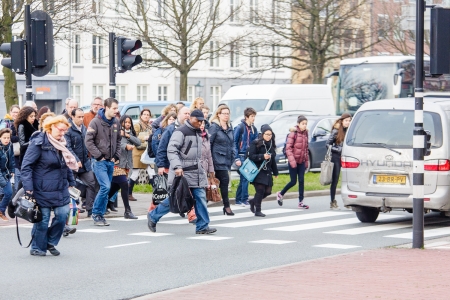Important factors in pedestrian crashes are the speed of cars, pedestrian appraisal of the speed of a car, distraction (mobile phones) and public lighting.
Crash severity depends on the speed of crossing traffic: only at low speeds (30 km/h or lower) will a collision not or hardly result in a fatal outcome for the pedestrian. For more detailed information, see the question What is the correlation between collision speed (of cars) and the pedestrian fatality rate?.
When crossing, it is important that pedestrians should be able to properly judge when an approaching vehicle will reach the crossing. Particularly for older pedestrians, speeds are hard to estimate [5].
There are no figures available as to what degree distraction is a factor in pedestrian road crashes in the Netherlands. In the United States, the percentage of fatal pedestrian road crashes involving phone use has increased from less than 1% in in 2004 to 3.6% in 2010 [6].
The level of public lighting affects the risk for pedestrians more than for motorised traffic [7] [8]. Research in the Netherlands also proves that public lighting has a stronger protective effect for vulnerable road users (pedestrians, cyclists, moped riders) than for drivers of motor vehicles [9]; also see SWOV fact sheet Public lighting and vehicle lighting.
Older road users
The road safety of older road users is mainly determined by two factors: functional disorders and physical vulnerability.
Growing older is often accompanied by functional impairment such as deterioration of sight, hearing, and responsiveness, problems in distributing attention, and dementia. Particularly the deterioration of motor functions increases crash risk. By and large, the deterioration of motor functions comprises slower movements, a decrease of muscle strength, a decrease of fine motor skills, and an exceptionally strong decrease of the ability to adapt to sudden changes in posture [4]. There are few indications that the deterioration of visual, auditory and cognitive functions accompanying the normal ageing process also has road safety consequences. Only severe sensory, perceptual and cognitive disorders do correlate to crash involvement [4] [10].
Physical vulnerability is caused by, among other things, a decrease of muscle power and flexibility, by balance, and muscle control by the brain. In addition, the normal ageing process of the body may be exacerbated by various diseases or afflictions (and related medication), a poor and unhealthy lifestyle, and too little physical exercise [11].
